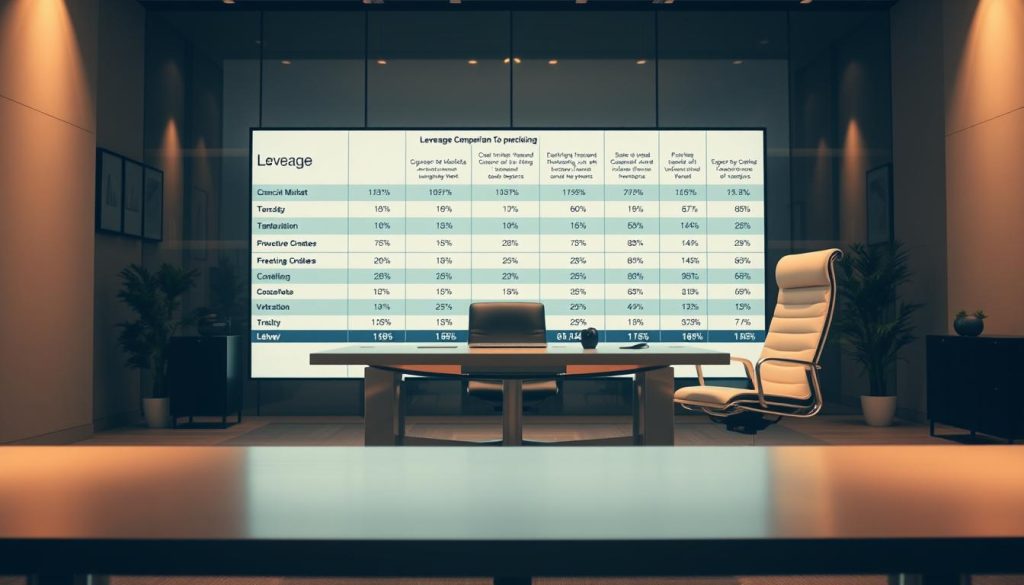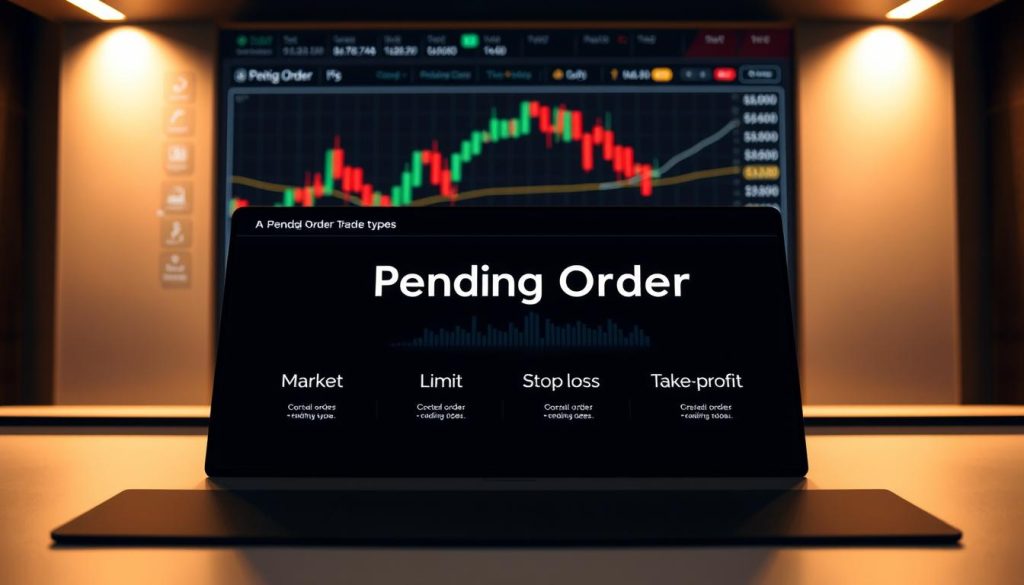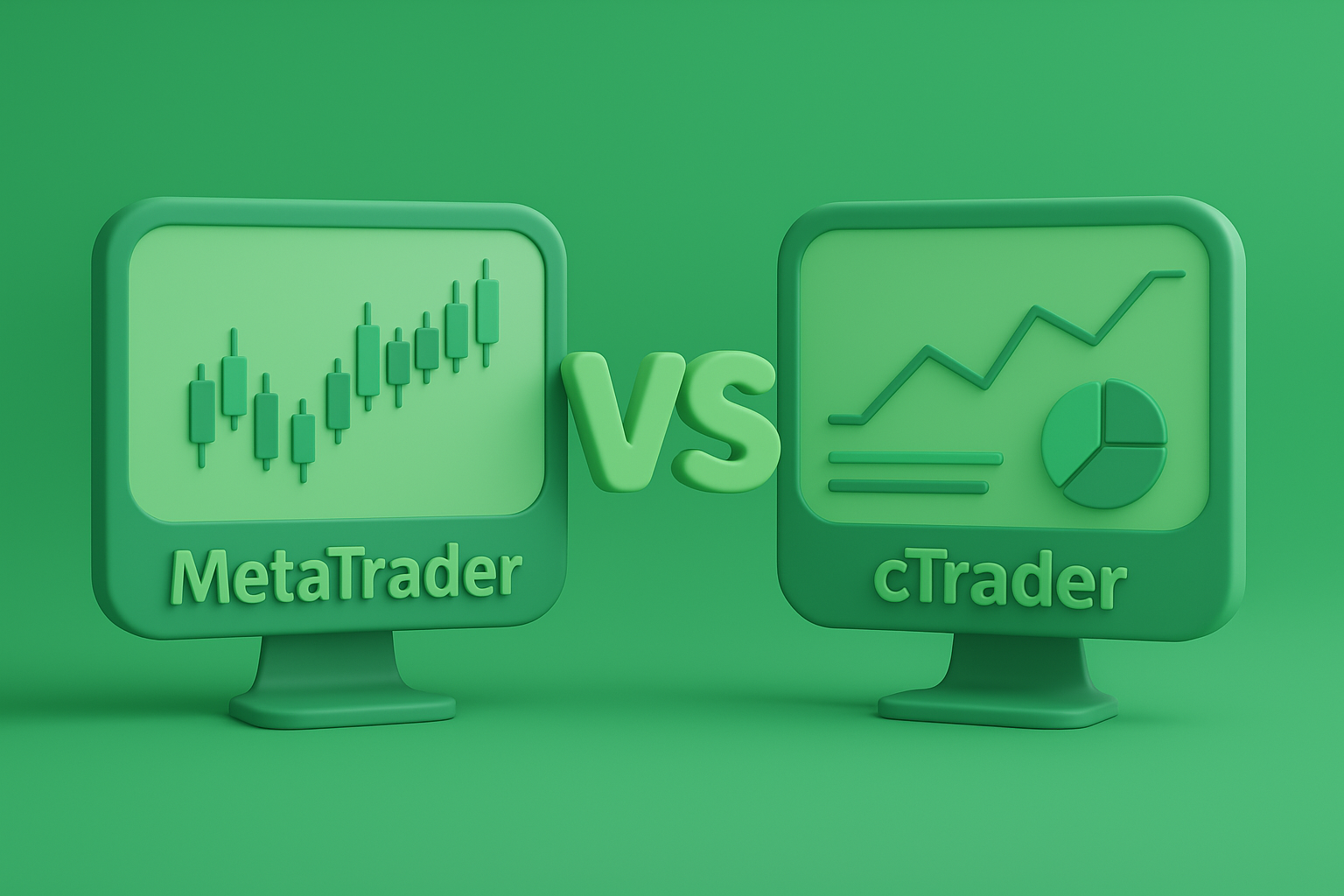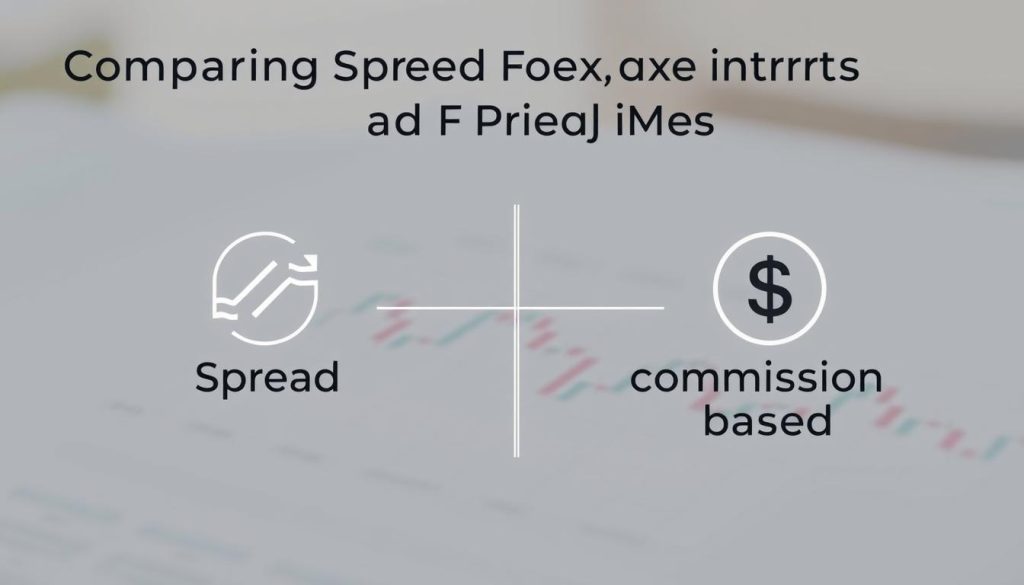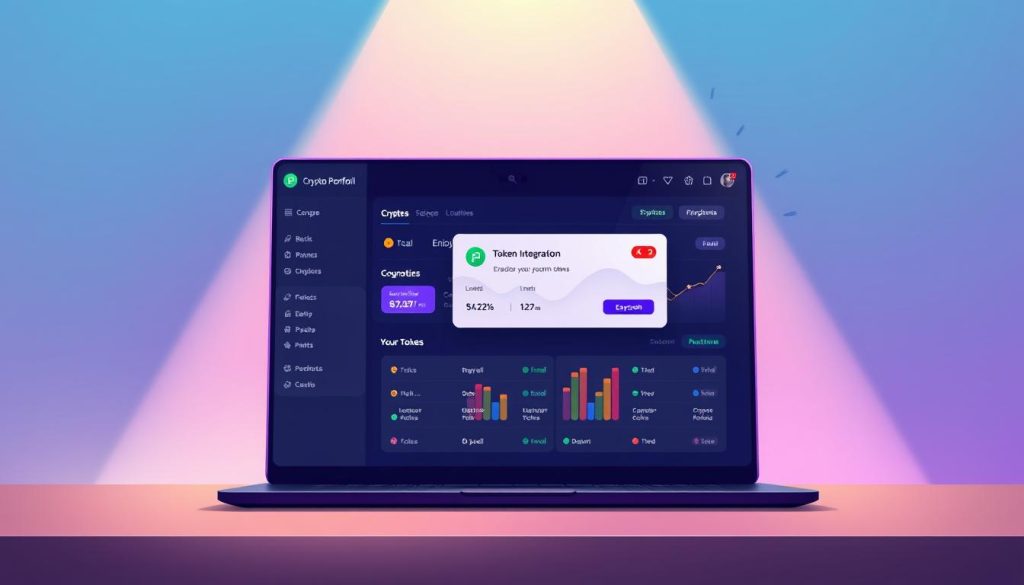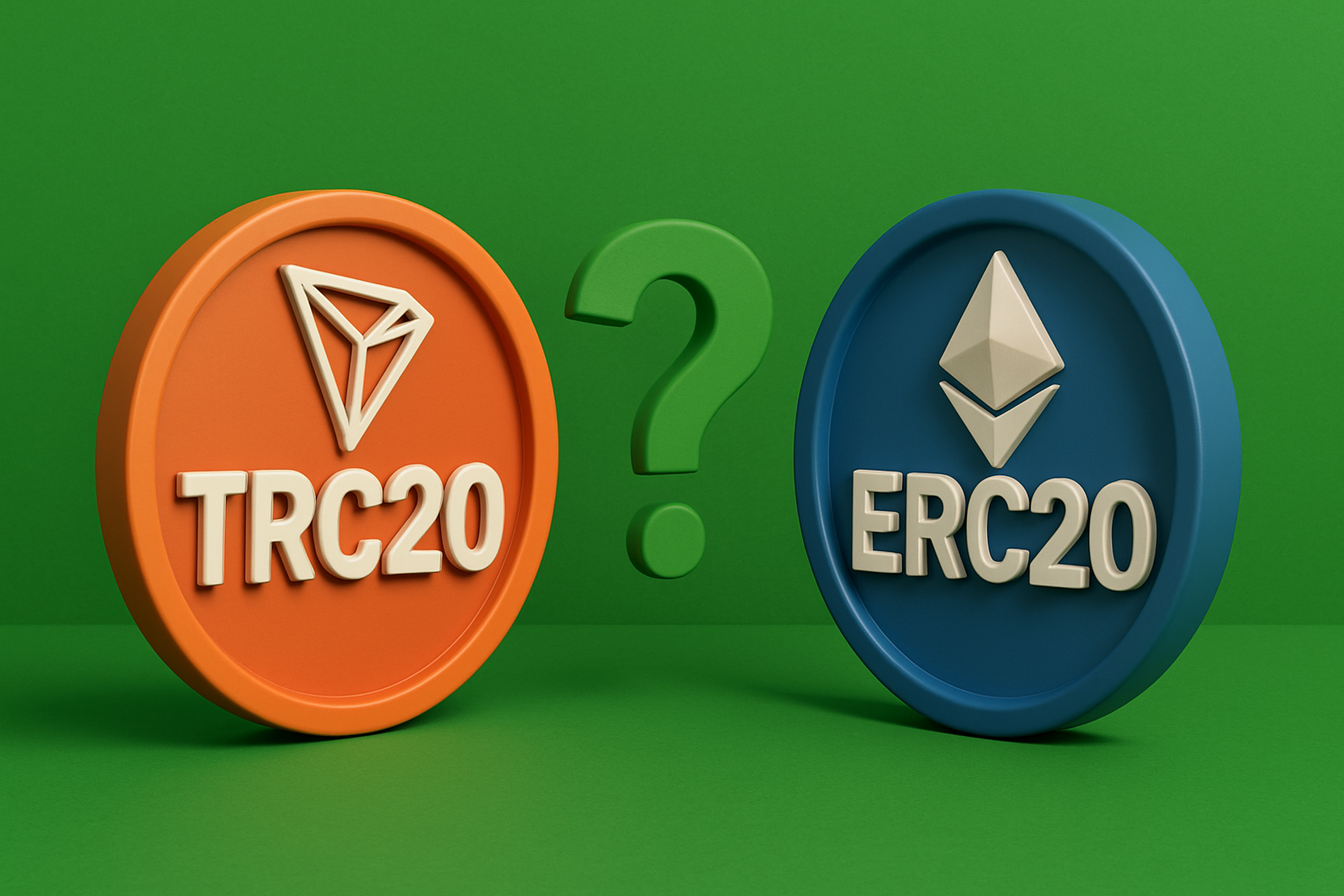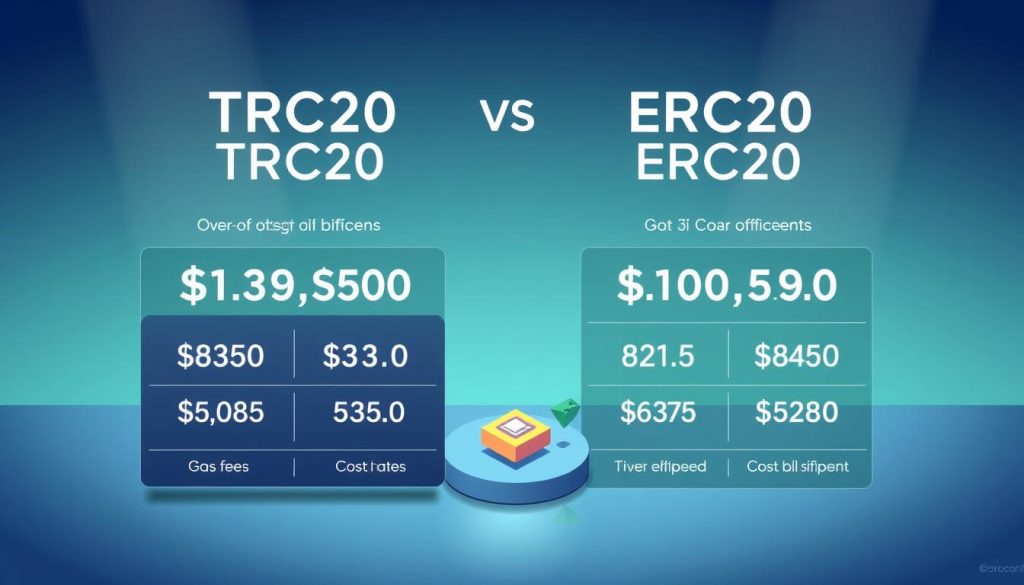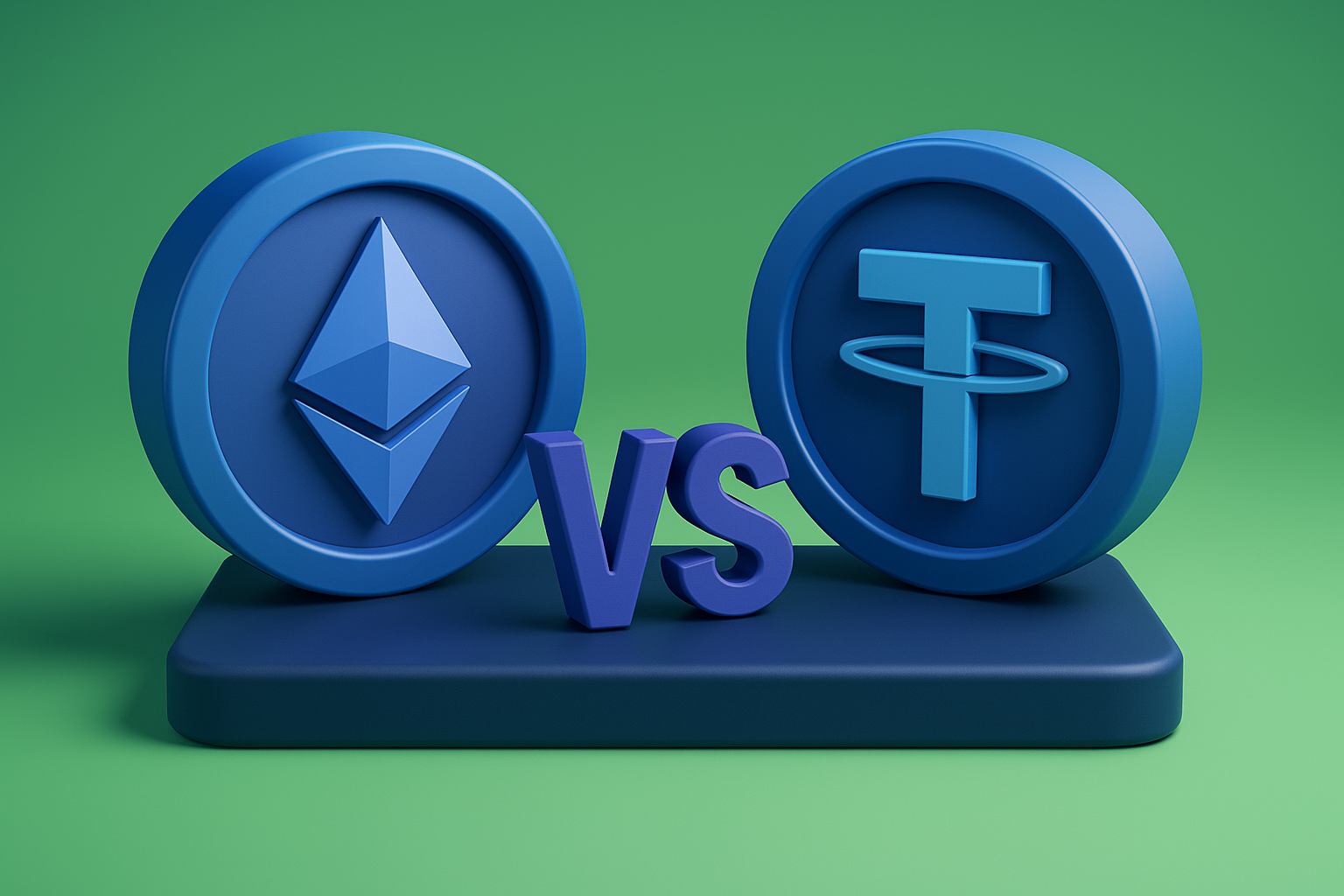This guide delivers a rigorous framework that helps investors evaluate a company using evidence from filings, ratios, and comparable peers.
The text shows how analysis fits into the stock market learning path and turns research into a repeatable workflow. Readers will learn to locate filings on EDGAR, read balance sheets, income statements, and cash flow reports, and build a clear valuation thesis.
Practical outcomes include screening, peer comparison, and execution steps that suit both newer and experienced investors. The guide also reviews value, growth, dividend/income, quality, and contrarian strategies and when each tends to work given the market regime.
Early risk notes explain that market sentiment can overpower fundamental signals in the short term, and historical data can lag new developments. Ongoing research keeps a company’s outlook current and improves decision quality over time.
Key Takeaways
- Provides a step-by-step workflow for company evaluation and stock selection.
- Shows how to find and interpret filings on EDGAR.
- Covers major strategies and when to apply each approach.
- Stresses risk: sentiment may diverge from fundamentals in the short run.
- Targets both novice and seasoned investors seeking disciplined research.
What Investors Need Right Now: How-To Foundations for Fundamental vs. Technical Approaches
Investors need a clear, step-by-step method today to choose between longer-term company research and short-term chart signals. This section shows when each approach fits and how to combine them into a repeatable workflow.
User intent and how this guide helps
Readers want a structured way to act with conviction amid volatile conditions. They seek a process that turns company metrics, ratios, and qualitative factors into a short list of candidate stocks.
When to prioritize fundamentals, when technicals help, and when to blend both
Prioritize fundamental analysis for longer horizons, payout health, or when durable advantages and earnings trends drive value. Use financial metrics like EPS, P/E, and dividend yield to judge a company’s durability and coverage.
Use technical analysis for timing on short to intermediate trades. Price and volume patterns — moving averages, support and resistance, breakouts — help place entries, exits, and stop levels.
Combine both: select stocks with solid company profiles, then confirm an entry with chart signals. Be mindful of risk: sentiment can push prices away from intrinsic value and financial data can lag revisions. Match the approach to goals — income-focused investors lean toward company fundamentals; active traders add chart tools for execution.
- Sequence: selection → comparison → chart confirmation → disciplined trade management.
Market Fundamental Analysis
Evaluating a company’s books and key ratios gives investors a clearer view of long-term strength and vulnerabilities.
What it is: A disciplined evaluation of a company’s financial health, profitability, liquidity, and efficiency using primary statements and standardized ratios.
The scope spans valuation (P/E, P/B), profitability (ROE, ROA), and cash generation (cash flow per share). Each metric shines light on a different part of the business.
Comparability matters: conclusions are strongest within the same industry and size cohort. Comparing unrelated companies can mislead because normal ranges differ by sector.
| Metric | Purpose | Insight | Common Pitfall |
|---|---|---|---|
| P/E | Valuation | Price vs. earnings expectation | Ignore growth context |
| ROE / ROA | Profitability | Return on capital and assets | Skewed by leverage |
| Cash flow per share | Cash generation | Quality of earnings | One-time items mask trends |
| P/B | Balance sheet | Book value relation | Not meaningful for intangibles-heavy firms |
- Use multiple metrics across time — no single ratio suffices.
- Blend numbers with qualitative context: model durability, competition, and cycles.
- Apply a repeatable process to filter noise and sharpen investment decisions.
Read the Statements First: Balance Sheet, Income Statement, and Cash Flow
Open the filings and let the statements guide the initial research into assets, debts, and cash flow.
Balance sheet essentials
The balance sheet records assets, liabilities, and shareholders’ equity at a single point in time. Assets = liabilities + equity, so the sheet shows solvency and book value signals.
Check the mix of assets and structure of debt. High short-term liabilities or concentrated debt can create pressure. Compare equity to the market later for price-to-book insight.
Reading the income statement
The income statement reports revenue, expenses, and net income over a period. Track revenue growth and margin trends across several periods to judge earnings durability.
Watch for one-time items and operating leverage. Those drivers separate structural improvement from temporary gains.
Statement of cash flow and liquidity
The cash flow statement breaks cash from operations, investing, and financing. Prioritize operating cash: it fuels dividend payouts, capex, and debt service.
Compare reported earnings to operating cash to spot quality issues. Free cash flow trends over multiple periods reveal sustainability.
Where to find filings
Public companies publish 10-Qs and 10-Ks on EDGAR and their investor relations pages. Use the primary filings and footnotes for context-rich, verifiable data.
| Statement | Key focus | What it reveals |
|---|---|---|
| Balance sheet | Assets, liabilities, equity | Solvency, book value signals, debt structure |
| Income statement | Revenue, expenses, net income | Growth, margins, earnings trends |
| Cash flow statement | Operating, investing, financing cash | Liquidity, sustainability, free cash flow |
Valuation Building Blocks: EPS, P/E, PEG, and Price-to-Book
Valuation tools translate company performance into a common price framework. These measures let investors compare stocks across sectors and time. The section focuses on practical use and pitfalls.
Earnings per share and growth
Earnings per share shows profit allocated to each share. Track multi-period earnings per share growth to see whether profitability scales with revenue and margins.
Price-to-earnings and forward P/E
P/E measures a stock’s current price against trailing EPS. Forward P/E uses projected earnings to frame future price versus earnings expectations. Compare to peer averages to avoid apples-to-oranges conclusions.
PEG: price versus growth
The PEG ratio adjusts price for expected earnings growth. It helps balance high price against credible growth and is widely used by growth-focused investors.
Price-to-book and book value
Price-to-book compares market capitalization to book value per share. Use it when asset intensity matters: a low P/B can signal underused assets; a high P/B may reflect efficient asset deployment.
| Metric | What it compares | Best use |
|---|---|---|
| EPS / EPS growth | Earnings per share over time | Profit trend and scalability |
| P/E / Forward P/E | Price versus earnings | Valuation vs. peers and forecasts |
| PEG | Price-to-earnings relative to growth | Growth-adjusted value check |
| P/B | Price versus book value | Asset-backed valuation |
Practical note: Evaluate companies with a basket of ratios and cross-check with cash conversion and balance sheet strength to avoid common value traps.
Profitability, Cash Generation, and Dividends
Assessing returns and cash per share reveals if reported profits can support payouts and reinvestment.
Return on equity (ROE) and return on assets (ROA) measure profit efficiency. ROE equals net income divided by shareholders’ equity and shows how well a company turns equity into earnings. ROA equals net income divided by total assets and tests asset efficiency across business models.
Cash flow per share and free cash flow efficiency
Cash flow per share is derived from operating cash flow divided by shares outstanding. It indicates cash generation capacity on a per share basis.
Free cash flow efficiency compares FCF to revenue or assets to show how well the firm converts sales into discretionary cash for growth, debt service, or distributions.
Dividend per share and dividend yield: income and payout health
Dividend per share is the cash amount paid to each share. Dividend yield equals annual dividend divided by share price and moves inversely with price.
Interpret yield carefully: very high dividend yield can signal elevated risk or unsustainable payouts. Examine payout ratios and multi-year cash coverage before assuming durability.
- Use ROE to judge conversion of shareholder equity into earnings and ROA for asset efficiency.
- Track cash flow per share trends to confirm earnings convert to cash.
- Compare dividend per share and payout coverage against free cash flow over several years.
| Metric | Formula | Primary insight |
|---|---|---|
| ROE | Net income / Shareholders’ equity | Profit per unit of equity; capital efficiency |
| ROA | Net income / Total assets | Asset utilization across business types |
| Cash flow per share | Operating cash flow / Shares outstanding | Per-share cash generation; payout support |
| Dividend yield | Annual dividend / Share price | Income return; sensitive to price moves |
Context Matters: Industry Averages, Sector Trends, and Macro Factors
Comparing a firm to relevant peers and to prevailing economic conditions helps reveal true performance.
Anchor analysis in peer sets by industry and market cap. This avoids apples-to-oranges conclusions. Sector averages for P/E, P/B, and dividend yield reflect different business economics and should guide expectations.

Peer comparison by sector and market cap
Investors should match companies with peers of similar size and business models. Small-cap firms often carry different growth profiles and risks than large-cap names.
Interest rates, inflation, and geopolitics
Macro factors change cost structures, demand, and refinancing risk. Rate moves raise discount rates, while inflation alters input costs and pricing power.
- Translate top-down shifts into concrete effects: demand elasticity, input pressure, and capital intensity.
- Benchmark performance against sector averages to separate true outperformance from cyclical noise.
- Adjust valuation frameworks where tangible assets dominate versus intangible-heavy companies.
Watch leadership rotation: as growth, inflation, and policy evolve, recalibrate relative value and avoid assuming cyclicals are permanent winners.
A Practical How-To Workflow for Fundamental Analysis
Start with clean data and a repeatable screen to move from thousands of names to a short watchlist.
Gather and clean data: statements, ratios, and time periods
Collect 10-K and 10-Q filings from EDGAR and the company’s investor page. Normalize fiscal period ends and adjust for stock splits or share issuance.
Compute core ratios—P/E, P/B, ROE, and dividend yield—using consistent period definitions so numbers are comparable across companies.
Screen the stock universe
Build a screening universe and filter by multi-year revenue growth, current EPS growth, P/E or forward P/E, P/B, ROE, and dividend yield. Schwab-style screens narrow thousands to a few dozen candidates.
Example: require three-year revenue growth > 8% and positive EPS growth to prioritize durable earnings momentum.
Compare to peers and history
Benchmark each candidate to industry averages and its historical ranges. Look for justified re-ratings or signs of mean reversion.
Synthesize a thesis and trade plan
Document whether the idea is value, growth, or income. List catalysts, key assumptions, and top risks such as margin pressure or refinancing needs.
Predefine position size and exit rules to enforce discipline. Confirm timing later with charts, but only after the company case clears quality and valuation hurdles.
| Step | Action | Outcome |
|---|---|---|
| Data collection | Download filings; normalize periods | Comparable ratios across companies and period ends |
| Screening | Filter by revenue, EPS, P/E, P/B, ROE, dividend yield | Shortlist of stocks that meet quantitative thresholds |
| Peer & historical check | Compare to industry averages and past ranges | Context on valuation and reversion risk |
| Thesis & sizing | Write value/growth/income thesis; set position size and exit | Clear plan that separates research from trading decisions |
Investor Playbooks: Value, Growth, Dividend, Quality, and Contrarian
Investors adopt distinct playbooks to match goals, risk tolerance, and a company’s lifecycle. Each playbook sets screening rules, evidence standards, and clear red flags.

Value investing
Focus: find price dislocations versus intrinsic metrics. Use P/E, P/B, and free cash flow to argue upside.
Screen: trailing P/E below peers, low price-to-book relative to sector, positive free cash flow trends.
Growth investing
Focus: durable revenue and earnings compounding. Emphasize PEG and forward expectations when paying a premium.
Screen: multi-year top-line growth, improving margins, credible catalysts for continued expansion.
Dividend and quality investing
Focus: sustainable yield with conservative payout and strong balance sheet. Check cash coverage and ROE trends.
Contrarian tactics
Buy into out-of-favor sectors when fundamentals stabilize and sentiment stays pessimistic. Expect mean reversion as cycles turn.
“A clear rule set prevents emotion from turning conviction into overreach.”
- Red flags: structurally declining revenue, weak cash conversion, stretched leverage.
- Blend styles over time as companies evolve; investors may move between playbooks.
| Playbook | Primary screen | Key red flag |
|---|---|---|
| Value | Low P/E, low P/B, strong FCF | Price gap with worsening sales |
| Growth | High revenue CAGR, solid PEG | Falling margin trajectory |
| Dividend/Quality | Yield coverage by FCF, low leverage | Unstable cash flow |
Blending Fundamentals with Technical Analysis for Entries and Exits
A disciplined workflow blends company research with chart signals so entrants act with both conviction and precision.
Use fundamentals for selection; use charts for timing
First, filter stocks by earnings, cash flow, and balance-sheet strength. That narrows choices to names that fit the thesis.
Next, apply technical analysis to time entries and exits. Charts reveal whether price momentum supports the financial case.
Moving averages, support/resistance, volume, and momentum cross-checks
Trend tools such as 20-, 50-, and 200-day moving averages show direction and bias. Use support and resistance to map risk.
Volume and momentum indicators confirm conviction. Rising volume on a reclaim or breakout signals real buying interest.
Breakouts versus pullbacks: finding favorable price levels
Decide if the trade fits a breakout after consolidation or a buy-the-pullback plan to a key average. Match the choice to risk tolerance and market context.
- Sequence: screen by finance first, then apply chart criteria for entry and stop placement.
- Checklist: trend direction, relative strength, volume confirmation, and clear invalidation level.
- Example: a 20-day average reclaim with rising volume or first higher high after a base.
Discipline matters: preset stops and position sizing protect the portfolio so one idea cannot derail long-term goals.
Risk, Limits, and Discipline in Fundamental Analysis
Risk controls and clear limits turn good company research into durable investment results.
Sentiment can outweigh strong fundamentals
Investors may find that price swings ignore a company’s health for extended periods. Sentiment, headlines, or flows often create mispricing that lasts beyond a single period.
Action: keep active risk controls—predefined stops and position limits—so one stock cannot derail a portfolio.
Watch for stale data and fast revisions
Reported figures lag real events. Guidance changes, analyst revisions, and high-frequency indicators can front-run filings.
Action: monitor updates and treat historical ratios as a starting point, not an endpoint.
Diversify, size, and avoid single-ratio tunnel vision
Diversify across themes and companies to reduce concentration risk. Size positions to reflect thesis strength and downside potential.
- Validate views with multiple metrics and cross-checks.
- Predefine exit criteria and review cadence to keep discipline.
“Discipline—averaging rules, stop-losses, and regular reviews—sustains the long-term edge.”
Conclusion
Closing the loop means pairing statement-driven valuation with price timing and risk limits.
Start with filings: read statements, compute key ratios, and compare the company to peers. Then size the opportunity and confirm entry with chart signals. This sequence helps turn research into disciplined investment action.
Align strategy—value, growth, or income—with goals and document assumptions. Sustainable dividend payouts depend on cash per share and prudent allocation, not just headline yield.
Iterate as price, share count, and results evolve. Maintain clear stop limits and a regular review cadence.
Consistent process, defined risk, and continuous learning give investors the durable edge in the stock market.
FAQ
What is the difference between fundamental and technical approaches for selecting stocks?
Fundamental evaluation examines a company’s financial health — revenue, earnings per share, cash flow, balance sheet strength, and dividend capacity — to estimate intrinsic value. Technical methods analyze price action, moving averages, support/resistance and volume to time entries and exits. Investors often use fundamentals to choose a candidate and technicals to refine timing.
When should an investor prioritize company statements like the balance sheet, income statement, and cash flow?
Investors prioritize statements when assessing long-term viability, dividend safety, or valuation gaps. The balance sheet reveals assets, liabilities and book value; the income statement shows revenue and net income trends; the cash flow statement indicates operating cash and liquidity. Use these when judging solvency, earnings quality, or free cash flow generation.
How does earnings per share (EPS) factor into valuation?
EPS is the net income allocated to each share and underpins P/E and forward P/E comparisons. Rising EPS supports higher valuations if growth is sustainable. Analysts also compare EPS growth against price to compute PEG, which adjusts for growth and helps spot over- or under-priced shares.
What are the most useful valuation ratios for investors and when to use them?
Core ratios include P/E (price versus earnings), PEG (price relative to earnings growth), price-to-book (P/B) and dividend yield. Use P/E for earnings-based comparisons, PEG to account for growth, P/B when book value matters (financials, asset-heavy firms), and dividend yield for income-focused strategies.
How should dividend yield and payout be evaluated for income investors?
Evaluate dividend per share, yield relative to peers, payout ratio and coverage from free cash flow. A sustainable yield combines a reasonable payout ratio, consistent free cash flow and a strong balance sheet. High yields that lack coverage or come from rising leverage signal risk.
What role do industry averages and sector trends play in assessment?
Context matters: compare ratios and growth rates to sector and industry norms to avoid apples-to-oranges conclusions. Interest rates, inflation, and geopolitical events also shift sector economics, so adjust expectations for capital intensity, cyclical demand and margin pressure.
What is a practical workflow for conducting this type of research?
A practical workflow: gather and clean financial statements and historical ratios; screen by metrics like revenue growth, P/E, P/B, ROE and dividend yield; benchmark against industry averages; model scenarios for earnings and cash flow; then synthesize an investment thesis with clear risks and an entry/exit plan.
How can investors blend fundamentals with technical tools to improve timing?
Use fundamentals to shortlist stocks with sound earnings, cash and balance sheet signals. Then apply moving averages, support/resistance, volume and momentum to identify favorable entry points, stop levels and exits. Technicals reduce the risk of poor timing without changing the fundamental thesis.
What are common pitfalls and limits when relying on financial ratios?
Common pitfalls include stale or revised data, industry mismatches, one-off accounting items distorting EPS, and overreliance on a single ratio. Ratios should be trended, adjusted for atypical events, and interpreted in the context of the company’s business model and capital structure.
How should investors assess risk and position sizing using this approach?
Assess risk by noting leverage, liquidity, earnings variability and macro exposure. Use diversification across sectors and position sizing rules that limit single-stock exposure. Factor in volatility and correlation to other holdings when sizing positions and setting stop-losses.
Where can investors find reliable filings and company data for in-depth review?
Primary sources include SEC EDGAR filings (10-Ks, 10-Qs, 8-Ks) and company investor relations pages. Supplement with financial data providers like Bloomberg, FactSet, Yahoo Finance or Morningstar for normalized ratios and historical time series.
Which profitability metrics best indicate durable competitive advantage?
Return on equity (ROE) and return on assets (ROA) reveal how efficiently a company uses capital and assets. Consistently above-peer ROE and stable margins over time often indicate sustainable advantages, especially when paired with strong cash flow conversion.
How do macro factors like interest rates and inflation affect company valuations?
Higher interest rates raise discount rates, reducing present value of future earnings and pressuring high-growth valuations. Inflation can erode margins for firms without pricing power. Investors should adjust growth and margin assumptions and compare firms by sensitivity to these variables.
What screening criteria are effective for different investor playbooks (value, growth, dividend)?
Value screens emphasize low P/E, low P/B and strong free cash flow. Growth screens target robust revenue and EPS growth, reasonable PEG ratios and scalable margins. Dividend or quality screens prioritize yield, payout coverage, steady cash flow and strong balance sheets.
How often should an investor revisit an investment thesis built on these fundamentals?
Revisit the thesis after quarterly earnings, significant revisions to guidance, material balance sheet changes, or notable macro shifts. Routine checks every quarter or semiannually help catch revisions early while avoiding reaction to normal short-term noise.
Can this approach be applied across market capitalizations and sectors?
Yes, but metrics and benchmarks differ by size and sector. Small caps often show higher growth but more volatility and weaker liquidity. Capital-intensive sectors rely more on book value and ROA, while tech firms emphasize revenue growth and free cash flow trends. Adjust criteria to sector norms.
How FXNX Simplifies Fundamental Analysis
At FXNX, we go beyond offering premium trading conditions. Our mission is to empower traders with innovative tools and solutions that make fundamental analysis faster, clearer, and more effective.
- Trading Robots & AI: Our intelligent systems analyze both fundamental and technical data in real time, generating reliable and actionable signals.
- Access to Trusted Data Sources: Through the FXNX trading panel, investors gain direct access to macroeconomic reports, financial statements, and market data ,all in one place.
- Advanced Analytical Dashboards: With our combined Fundamental + Technical dashboards, traders can streamline their decision-making process and spot opportunities with greater confidence.
- Education & Expert Support: The FXNX team provides educational content, webinars, and practical guides, ensuring traders build a deeper understanding of intrinsic value and market opportunities.
FAQ
What is the difference between fundamental and technical approaches for selecting stocks?
Fundamental evaluation examines a company’s financial health — revenue, earnings per share, cash flow, balance sheet strength, and dividend capacity — to estimate intrinsic value. Technical methods analyze price action, moving averages, support/resistance and volume to time entries and exits. Investors often use fundamentals to choose a candidate and technicals to refine timing.
When should an investor prioritize company statements like the balance sheet, income statement, and cash flow?
Investors prioritize statements when assessing long-term viability, dividend safety, or valuation gaps. The balance sheet reveals assets, liabilities and book value; the income statement shows revenue and net income trends; the cash flow statement indicates operating cash and liquidity. Use these when judging solvency, earnings quality, or free cash flow generation.
How does earnings per share (EPS) factor into valuation?
EPS is the net income allocated to each share and underpins P/E and forward P/E comparisons. Rising EPS supports higher valuations if growth is sustainable. Analysts also compare EPS growth against price to compute PEG, which adjusts for growth and helps spot over- or under-priced shares.
What are the most useful valuation ratios for investors and when to use them?
Core ratios include P/E (price versus earnings), PEG (price relative to earnings growth), price-to-book (P/B) and dividend yield. Use P/E for earnings-based comparisons, PEG to account for growth, P/B when book value matters (financials, asset-heavy firms), and dividend yield for income-focused strategies.
How should dividend yield and payout be evaluated for income investors?
Evaluate dividend per share, yield relative to peers, payout ratio and coverage from free cash flow. A sustainable yield combines a reasonable payout ratio, consistent free cash flow and a strong balance sheet. High yields that lack coverage or come from rising leverage signal risk.
What role do industry averages and sector trends play in assessment?
Context matters: compare ratios and growth rates to sector and industry norms to avoid apples-to-oranges conclusions. Interest rates, inflation, and geopolitical events also shift sector economics, so adjust expectations for capital intensity, cyclical demand and margin pressure.
What is a practical workflow for conducting this type of research?
A practical workflow: gather and clean financial statements and historical ratios; screen by metrics like revenue growth, P/E, P/B, ROE and dividend yield; benchmark against industry averages; model scenarios for earnings and cash flow; then synthesize an investment thesis with clear risks and an entry/exit plan.
How can investors blend fundamentals with technical tools to improve timing?
Use fundamentals to shortlist stocks with sound earnings, cash and balance sheet signals. Then apply moving averages, support/resistance, volume and momentum to identify favorable entry points, stop levels and exits. Technicals reduce the risk of poor timing without changing the fundamental thesis.
What are common pitfalls and limits when relying on financial ratios?
Common pitfalls include stale or revised data, industry mismatches, one-off accounting items distorting EPS, and overreliance on a single ratio. Ratios should be trended, adjusted for atypical events, and interpreted in the context of the company’s business model and capital structure.
How should investors assess risk and position sizing using this approach?
Assess risk by noting leverage, liquidity, earnings variability and macro exposure. Use diversification across sectors and position sizing rules that limit single-stock exposure. Factor in volatility and correlation to other holdings when sizing positions and setting stop-losses.
Where can investors find reliable filings and company data for in-depth review?
Primary sources include SEC EDGAR filings (10-Ks, 10-Qs, 8-Ks) and company investor relations pages. Supplement with financial data providers like Bloomberg, FactSet, Yahoo Finance or Morningstar for normalized ratios and historical time series.
Which profitability metrics best indicate durable competitive advantage?
Return on equity (ROE) and return on assets (ROA) reveal how efficiently a company uses capital and assets. Consistently above-peer ROE and stable margins over time often indicate sustainable advantages, especially when paired with strong cash flow conversion.
How do macro factors like interest rates and inflation affect company valuations?
Higher interest rates raise discount rates, reducing present value of future earnings and pressuring high-growth valuations. Inflation can erode margins for firms without pricing power. Investors should adjust growth and margin assumptions and compare firms by sensitivity to these variables.
What screening criteria are effective for different investor playbooks (value, growth, dividend)?
Value screens emphasize low P/E, low P/B and strong free cash flow. Growth screens target robust revenue and EPS growth, reasonable PEG ratios and scalable margins. Dividend or quality screens prioritize yield, payout coverage, steady cash flow and strong balance sheets.
How often should an investor revisit an investment thesis built on these fundamentals?
Revisit the thesis after quarterly earnings, significant revisions to guidance, material balance sheet changes, or notable macro shifts. Routine checks every quarter or semiannually help catch revisions early while avoiding reaction to normal short-term noise.
Can this approach be applied across market capitalizations and sectors?
Yes, but metrics and benchmarks differ by size and sector. Small caps often show higher growth but more volatility and weaker liquidity. Capital-intensive sectors rely more on book value and ROA, while tech firms emphasize revenue growth and free cash flow trends. Adjust criteria to sector norms.
FAQ
What is the difference between fundamental and technical approaches for selecting stocks?
Fundamental evaluation examines a company’s financial health — revenue, earnings per share, cash flow, balance sheet strength, and dividend capacity — to estimate intrinsic value. Technical methods analyze price action, moving averages, support/resistance and volume to time entries and exits. Investors often use fundamentals to choose a candidate and technicals to refine timing.
When should an investor prioritize company statements like the balance sheet, income statement, and cash flow?
Investors prioritize statements when assessing long-term viability, dividend safety, or valuation gaps. The balance sheet reveals assets, liabilities and book value; the income statement shows revenue and net income trends; the cash flow statement indicates operating cash and liquidity. Use these when judging solvency, earnings quality, or free cash flow generation.
How does earnings per share (EPS) factor into valuation?
EPS is the net income allocated to each share and underpins P/E and forward P/E comparisons. Rising EPS supports higher valuations if growth is sustainable. Analysts also compare EPS growth against price to compute PEG, which adjusts for growth and helps spot over- or under-priced shares.
What are the most useful valuation ratios for investors and when to use them?
Core ratios include P/E (price versus earnings), PEG (price relative to earnings growth), price-to-book (P/B) and dividend yield. Use P/E for earnings-based comparisons, PEG to account for growth, P/B when book value matters (financials, asset-heavy firms), and dividend yield for income-focused strategies.
How should dividend yield and payout be evaluated for income investors?
Evaluate dividend per share, yield relative to peers, payout ratio and coverage from free cash flow. A sustainable yield combines a reasonable payout ratio, consistent free cash flow and a strong balance sheet. High yields that lack coverage or come from rising leverage signal risk.
What role do industry averages and sector trends play in assessment?
Context matters: compare ratios and growth rates to sector and industry norms to avoid apples-to-oranges conclusions. Interest rates, inflation, and geopolitical events also shift sector economics, so adjust expectations for capital intensity, cyclical demand and margin pressure.
What is a practical workflow for conducting this type of research?
A practical workflow: gather and clean financial statements and historical ratios; screen by metrics like revenue growth, P/E, P/B, ROE and dividend yield; benchmark against industry averages; model scenarios for earnings and cash flow; then synthesize an investment thesis with clear risks and an entry/exit plan.
How can investors blend fundamentals with technical tools to improve timing?
Use fundamentals to shortlist stocks with sound earnings, cash and balance sheet signals. Then apply moving averages, support/resistance, volume and momentum to identify favorable entry points, stop levels and exits. Technicals reduce the risk of poor timing without changing the fundamental thesis.
What are common pitfalls and limits when relying on financial ratios?
Common pitfalls include stale or revised data, industry mismatches, one-off accounting items distorting EPS, and overreliance on a single ratio. Ratios should be trended, adjusted for atypical events, and interpreted in the context of the company’s business model and capital structure.
How should investors assess risk and position sizing using this approach?
Assess risk by noting leverage, liquidity, earnings variability and macro exposure. Use diversification across sectors and position sizing rules that limit single-stock exposure. Factor in volatility and correlation to other holdings when sizing positions and setting stop-losses.
Where can investors find reliable filings and company data for in-depth review?
Primary sources include SEC EDGAR filings (10-Ks, 10-Qs, 8-Ks) and company investor relations pages. Supplement with financial data providers like Bloomberg, FactSet, Yahoo Finance or Morningstar for normalized ratios and historical time series.
Which profitability metrics best indicate durable competitive advantage?
Return on equity (ROE) and return on assets (ROA) reveal how efficiently a company uses capital and assets. Consistently above-peer ROE and stable margins over time often indicate sustainable advantages, especially when paired with strong cash flow conversion.
How do macro factors like interest rates and inflation affect company valuations?
Higher interest rates raise discount rates, reducing present value of future earnings and pressuring high-growth valuations. Inflation can erode margins for firms without pricing power. Investors should adjust growth and margin assumptions and compare firms by sensitivity to these variables.
What screening criteria are effective for different investor playbooks (value, growth, dividend)?
Value screens emphasize low P/E, low P/B and strong free cash flow. Growth screens target robust revenue and EPS growth, reasonable PEG ratios and scalable margins. Dividend or quality screens prioritize yield, payout coverage, steady cash flow and strong balance sheets.
How often should an investor revisit an investment thesis built on these fundamentals?
Revisit the thesis after quarterly earnings, significant revisions to guidance, material balance sheet changes, or notable macro shifts. Routine checks every quarter or semiannually help catch revisions early while avoiding reaction to normal short-term noise.
Can this approach be applied across market capitalizations and sectors?
Yes, but metrics and benchmarks differ by size and sector. Small caps often show higher growth but more volatility and weaker liquidity. Capital-intensive sectors rely more on book value and ROA, while tech firms emphasize revenue growth and free cash flow trends. Adjust criteria to sector norms.


